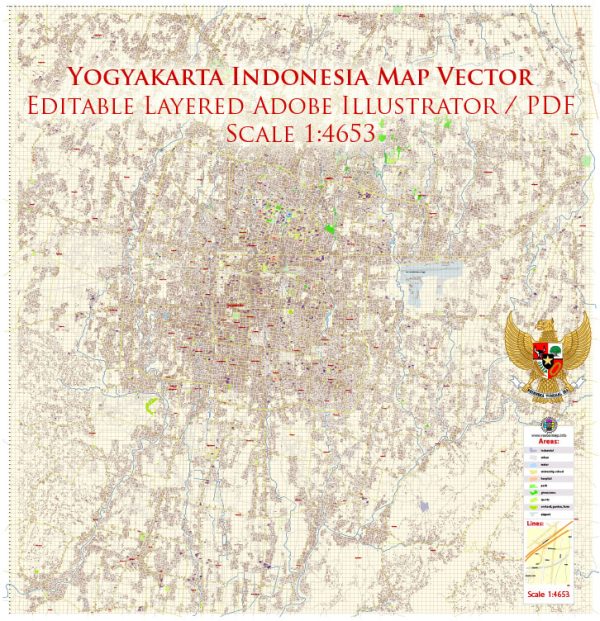Yogyakarta, often simply called Jogja, is a city on the island of Java in Indonesia and is known for its rich cultural heritage and historical significance. The history of Yogyakarta’s urban development is closely tied to the broader historical and cultural context of Java and Indonesia as a whole.
- Early History: Yogyakarta has a long history that dates back to the Mataram Kingdom in the 8th century. The region has been a center of Javanese civilization for centuries. The city’s urban development began to take shape during the Mataram Sultanate, and Yogyakarta became the capital of the kingdom.
- Dutch Colonial Period: The Dutch East India Company (VOC) established control over Java in the 17th century, leading to significant changes in the urban landscape. The Dutch colonial influence is evident in the architecture, layout, and infrastructure of Yogyakarta. The city served as a center for colonial administration and trade.
- Japanese Occupation: During World War II, Yogyakarta, like the rest of Indonesia, experienced Japanese occupation. This period had a profound impact on the social and economic structure of the city.
- Independence and the Indonesian National Revolution: After the Japanese surrender in 1945, Indonesia declared its independence, leading to a struggle against Dutch colonial forces. Yogyakarta played a crucial role in this struggle. In 1946, the city became the temporary capital of the newly-formed Republic of Indonesia.
- Post-Independence Period: Yogyakarta continued to grow and develop as an important cultural and political center after Indonesia gained full independence in 1949. The city’s urban development reflected the broader economic and political changes occurring in the country.
- Cultural and Educational Hub: Yogyakarta has maintained its status as a cultural and educational hub in Indonesia. The city is home to numerous universities, including Gadjah Mada University, one of the oldest and most prestigious in the country. The presence of these institutions has contributed to the city’s vibrancy and intellectual character.
- Sultan’s Palace (Kraton): The Kraton, the Sultan’s Palace, is a significant landmark in Yogyakarta. It has been the center of Javanese culture and the seat of the Sultan for centuries. The palace complex is an architectural and cultural treasure that attracts tourists and locals alike.
- Modern Urban Development: In recent decades, Yogyakarta has experienced rapid urbanization and modernization. The city has faced challenges such as traffic congestion and infrastructure development to accommodate its growing population. Efforts have been made to balance development with the preservation of cultural heritage.
Yogyakarta’s history of urban development is a dynamic narrative that reflects the ebb and flow of political, cultural, and economic forces in Indonesia. The city’s unique blend of tradition and modernity continues to make it a fascinating and vibrant place.


 Author: Kirill Shrayber, Ph.D.
Author: Kirill Shrayber, Ph.D.